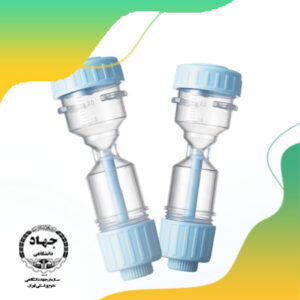They may involve gray matter such as cerebral cortex, deep nuclei, and brainstem. The demyelinating lesions seen on an MRI scan may be less indicative of inflammation than those of relapsing-remitting MS. With primary progressive MS, the disease is progressive from the start and doesnt involve frequent distinct inflammatory attacks. Lisanti C, Asbach P, Bradley W. The Ependymal "Dot-Dash" Sign: An MR Imaging Finding of Early Multiple Sclerosis. The histogram parameters (mode, pkh, hpkl, and hpkr) all significantly decrease in the MS group compared with the normal group. 2016;36(5):1426-47. Interestingly, the change in all four of these parameters can be explained by the loss of voxels with MTR values in the range (0.300.60) without regard for the gain of voxels with lower MTR values. The metabolic alterations in primary CNS neoplasms (12-15) and in demyelinating lesions of multiple sclerosis (MS) (16-20) have been studied extensively. Rule out all other possible diagnoses. To globally characterize MTR values, it is useful to store them in a histogram (20) (Fig 1). Secondary progressive MS is a stage that some people with relapsing-remitting MS will progress into. A complete list of these P values along with their direction of change is presented in the Table. Last medically reviewed on March 31, 2020. We provide a unique illustration of these . We can now use a technique called FLAIR to make it easier to spot the lesions. Multiple sclerosis (MS) is an inflammatory and neurodegenerative disease of the central nervous system (CNS). Reference article, Radiopaedia.org (Accessed on 18 Jan 2023) https://doi.org/10.53347/rID-1700, {"containerId":"expandableQuestionsContainer","displayRelatedArticles":true,"displayNextQuestion":true,"displaySkipQuestion":true,"articleId":1700,"questionManager":null,"mcqUrl":"https://radiopaedia.org/articles/multiple-sclerosis/questions/2512?lang=us"}, Case 12: extensive brainstem and cerebellar involvment, Schilder type (diffuse cerebral sclerosis), neuromyelitis optica spectrum disorder (Devic disease), McDonald diagnostic criteria for multiple sclerosis, progressive multifocal leukoencephalopathy (PML), acute inflammatory demyelinating polyradiculoneuropathy (AIDP), acute motor-sensory axonal neuropathy (AMSAN), chronic inflammatory demyelinating polyneuropathy (CIDP), acute disseminated encephalomyelitis (ADEM), acute hemorrhagic encephalomyelitis (AHEM), longitudinally extensive spinal cord lesion (LESCL), megalencephalic leukoencephalopathy with subcortical cysts, hypomyelination with atrophy of the basal ganglia and cerebellum (H-ABC), leukoencephalopathy with brainstem and spinal cord involvement and lactate elevation, hypomyelination with brainstem and spinal cord involvement and leg spasticity, cathepsin A-related arteriopathy with strokes and leukoencephalopathy (CARASAL), leukoencephalopathy with calcifications and cysts, pontine autosomal dominant microangiopathy with leukoencephalopathy (PADMAL), retinal vasculopathy with cerebral leukoencephalopathy and systemic manifestations (RVCL-S), adult-onset leukoencephalopathy with axonal spheroids and pigmented glia (ALSP), leukoencephalopathy due to autosomal recessive mutations in the mitochondrial alanyl-transfer RNA (tRNA) synthetase gene (AARS2-L), globoid cell leukodystrophy (Krabbe disease), adult-onset autosomal dominant leukodystrophy, cystic leukoencephalopathy without megalencephaly, classic multiple sclerosis (Charcot type), a strong association with HLA-DR15 (formerly covered by HLA-DR2)class II has been identified, patients exhibit periodic symptoms with complete recovery (early on), approximately 85% of patients with relapsing-remitting MS eventually enter a secondary progressive phase, defined by a progressive accumulation of disability for >12 months from disease onset, which can be determined prospectively or retrospectively, patients do not have remissions, with neurological deterioration being relentless, incorporates the previously described "progressive-relapsing"phenotype, defined as patients who remain functionally active for over 15 years, and thus is only a retrospective diagnosis, plaques can be homogeneously hypoattenuating, brain atrophy may be evident in long-standing chronic MS, some plaques may show contrast enhancement in the active phase, ideally performed as a 3D volumetric scan (1 mm isotropic), or, T1: 3D inversion recovery prepared gradient echo, lesions are typically iso- to hypointense (, hyperintense lesions are associated with brain atrophy and advancing disease, acute lesions often have surrounding edema, when these propagate centrifugally along the medullary venules and are arranged perpendicular to the lateral ventricles in a triangular configuration (extending radially outward - best seen on parasagittal images), they are termed, FLAIR is more sensitive than T2 in the detection of juxtacortical and periventricular plaques, while T2 is more sensitive to infratentorial lesions, enhancement is often incomplete around the periphery (, active plaques may demonstrate high or low ADC (increased or decreased diffusion), PD images are better at detecting cervical spinal cord MS lesions especially when T2W images fail to demonstrate these lesions, a sequence that suppresses both CSF and white matter signal and offers better delineation of the plaques, interferon beta: inhibition of T-lymphocyte proliferation, glatiramer acetate (Copaxone): immunomodulation, teriflunomide (Aubagio): reduces both T-cell and B-cell activation and proliferation, dimethyl fumarate (Tecfidera) and diroximel fumarate (Vumerity): immunomodulation, fingolimod (Gilenya), siponimod (Mayzent) and ozanimod (Zeposia): prevents lymphocyte migration out of lymph nodes and into CNS, natalizumab (Tysabri): inhibits binding of lymphocytes to endothelium, cladribine (Mavenclad): purine analog that targets lymphocytes, ocrelizumab (Ocrevus) and ofatumumab (Kesimpta): anti-CD20 monoclonal antibodies, alemtuzumab (Lemtrada): immunomodulation of T-cell and B-cell function, mitoxantrone (Novantrone): reduces T-cell and B-cell proliferation and reduces T-cell activation, particularly in patients treated with natalizumab with positive JC virus serology, a complication of cessation of natalizumab or treatment for natalizumab-related PML with plasma exchange or immunoabsorption, rarely lymphoma appears to arise from previously identified demyelinating lesions. Location of the plaques can be infratentorial, in the deep white matter, periventricular, juxtacortical or mixed white matter-grey matter lesions. Representative MRI scans at 1.5T of four cases - two each from the primary progressive (PP) and relapsing-remitting (RR) groups. You may be considered at high risk of MS if youve had CIS and an MRI scan shows MS-like lesions. MR Venography of Multiple Sclerosis. METHODS: Global MTR values for the group of normal subjects and for the group of MS subjects were characterized by 30 different measures involving simple statistics, histographic characteristics, MTR order information, and MTR range information. The clinical presentation of characteristic focal neurologic attacks as well as ruling out other MS mimics is essential to making an accurate diagnosis, she told Neurology Advisor. However, continued development of new brain T2/FLAIR lesions could lead to new attacks and thinking problems such as short-term memory loss or trouble keeping track of multiple tasks at the same time. Reich lab, NIH/NINDS. J Neurol. 2001;220(3):606-10. Many of the lesions may not be causing obvious symptoms. MS is characterized pathologically by multifocal areas of demyelination with loss of oligodendrocytes and astroglial scarring. We avoid using tertiary references. They satisfied brain MRI criteria in 92% cases. Once the histogram was created, the following measures were calculated: Typical normal MTR histogram shows the parameters H1 through H5. Susceptibility weighted imaging (SWI), originally called BOLD venographic imaging, is an MRI sequence that is exquisitely sensitive to venous blood, hemorrhage and iron storage. Doctors will also use a contrast agent called gadolinium with a T1-weighted scan to focus on newer, active lesions. 1 Presented in part as a poster at the annual meeting of the International Society for Magnetic Resonance, Vancouver, April 1997. Pronin. 2. Initially, a mapfile was created for each subject by removing the skull and extradural tissues in the Mo volume from their first examination. Multiple sclerosis (MS) is a chronic degenerative disease of the CNS characterized by demyelination and axonal degeneration in the brain and spinal cord, which are caused by an immune-mediated inflammatory process.The prevalence of MS is higher among women and people in temperate regions such as Europe and North America. Multiple sclerosis is believed to result from a cell-mediated autoimmune response against one's own myelin components, with loss of oligodendrocytes, with little or no axonal degeneration in the acute phase; however, in later stages, loss of oligodendrocytes results in axonal degeneration. 2010;31(6):983-9. Finally, to provide a single illustrative technique for describing the differences between these two groups, a transform relating the set of normal subjects to the set of MS subjects was created through the matching of each group's mean MTR histogram. Contrast dye, a substance thats injected into your vein, can be used to make some types of lesions show up more clearly on an MRI scan. From the mean MTR histogram of the two groups, a transform was created to describe a conversion between the two brain states. It was also observed that a higher number of voxels with MTR values less than 0.3 were found in the MS brain than in the normal brain; however, the increase in voxels with low MTR values does not balance out the decrease in voxels with high MTR values. Register now at no charge to access unlimited clinical news with personalized daily picks for you, full-length features, case studies, conference coverage, and more. Radiology. Although discussion of individual agents and therapies is well beyond the scope of this article, it is worth being aware of the main agents available and their mechanism of action 20: Prognosis is variable and depends on the pattern of disease a patient has (e.g. They are usually multiple. Characteristically, and by definition, multiple sclerosis is disseminated in space (i.e. 1991;157(5):1073-8. cane/wheelchair/frame) in another 5 to 15 years 12. ADVERTISEMENT: Supporters see fewer/no ads. Characteristically, and by definition, multiple sclerosis is disseminated in space (i.e. In this report, the difference between MS and normal subject groups with respect to these global MTR values was explored through the use of 30 different measures. Join Community. We will refer to this set of values from a single Mo-Ms pair as S and the total number of MTR values composing this set as N. Also, each individual element in S will be referred to as sj where j goes from 1 to N. The choice of 0.6 as a cutoff was determined empirically from the observation that almost no voxels contain an MTR value greater than this value. tumefactive MS) are discussed separately. Once a person is diagnosed with MS, regular MRI scans help in tracking the disease's progression, which can aid in making treatment decisions such as whether to continue with a current therapy or. A mapfile or image mask is simply a set of images that describe which voxel locations need to be analyzed and which voxel locations should be ignored in the analysis of a subject's brain. Our experts continually monitor the health and wellness space, and we update our articles when new information becomes available. Thank you for your interest in spreading the word on American Journal of Neuroradiology. CSF total protein, white cell count, and angiotensin . Since the two sets of normal data should not significantly differ, this normal-to-normal transform can be considered a scanner-to-scanner transform. 19. Further complicating the process are the numerous other disorders that can cause the same imaging findings that are characteristic of MS.2 These encompass a wide range of conditions, including various inflammatory disorders, CNS infections, genetic disorders, nutritional deficiencies, and more. Discover seven remedies for people with multiple sclerosis (MS) and constipation, such as creating a bathroom, An irritated or damaged nerve can cause pain known as neuralgia. Analyzing the visible changes in the brain and spinal cord may help assess current treatment and future options. Thirteen subjects (five normal volunteers, eight MS patients) were analyzed. Aided by a high-powered brain scanner and a 3D printer, NIH researchers peered inside the brains of hundreds of multiple sclerosis patients and found that dark rimmed spots representing ongoing, "smoldering" inflammation, called chronic active lesions, may be a hallmark of more aggressive and disabling forms of the disease. Long-standing plaques are firm (sclerosis) because of gliosis. Thus, the differences depicted by the normal MTR data and the transformed normal MTR data (pseudo-MS data) are statistically similar to the differences exhibited by the normal MTR data and the MS MTR data. MR Imaging in Multiple Sclerosis: Review and Recommendations for Current Practice. Dr Schiess added that ancillary testing, including blood work, CSF findings, optical coherence tomography (OCT), and evoked potentials can also facilitate diagnosis. For every MTR value examined, the bin representing that value is incremented by 1. Also calculated were the skew, which measures the degree of asymmetry around the mean, and the kurtosis, which measures the relative flatness of the MTR collective compared with a normal distribution centered around the mean: The next eight parameters (R1R8) were based on MTR-range quartiles that were formed by dividing the MTR range (0.00.60) into four equal parts. Initially, all elements were set to 0. CT features are usually non-specific, and significant change may be seen on MRI with an essentially normal CT scan. Hyperintense lesions are bright or white. If you have what you think may be MS symptoms, talk to your doctor. By multiplying the first set by 3, one can arrive at a set of pseudo-MS data containing the same mean as the MS data; that is, (3,6,6,3,3,6). Multiple sclerosis (MS) is a chronic disease of your central nervous system (CNS). With regard to the comparison of normal and MS subjects, 17 of 30 measures were statistically significant using an value of 0.05 (Fig 6). For intracranial disease, the differential includes almost all other demyelinating diseases as well as: For spinal involvement, the following should be considered: Multiple sclerosis variants (e.g. A group's mean histogram is a histogram created using all of that group's MTR data. In this way, all data acquired from one scanner can be transformed to appear as if they were acquired on another scanner, or all data acquired before an upgrade can be transformed to appear as if they were acquired after the upgrade. Thus, this report does not examine the monthly fluctuations in MS and normal brains, but instead compares the average individual brain state of each subject in the two groups. To view unlimited content, log in or register for free. The digital press . Mean MTR histograms for the normal volunteer group and the MS subject group. A cohort of 23 persons with multiple sclerosis (MS) (18 females, 5 males, 57 8.0 years) with multiple past gadolinium administrations (median 6, range 3-12) and 23 age- and sex-matched healthy controls underwent 1.5 Tesla MRI with MT, T1-weighted 2-dimensional spin echo, and T1-weighted 3-dimensional gradient echo. About 95% patients with clinically definitive MS have an abnormal MRI, but MRI is not a definitive investigation as up to 4% normal healthy individuals can have periventricular lesions that cannot be distinguished from MS. White matter lesions can also be found in other conditions, including ischemic and age related changes. The term "multiple sclerosis" refers to the many areas of scarring (sclerosis) that result from destruction of the tissues that wrap around nerves (myelin sheath) in the brain and spinal cord. It requires the doctors to really eliminate a lot of other potential diseases and it takes a doctor who's had significant experience with the disease. For example, one may find treatments that affect some of the measures and not others. At this MTR value, for every four voxels representing an MTR of approximately 0.5 in the normal brains, only one voxel represents this MTR value in the MS brain. Inaccurate MRI interpretation is the most common cause of incorrect diagnoses in patients with MS, underscoring the critical importance of the physicians familiarity with MS mimics.2 Taking a thorough medical history focused on questioning the patient about prior neurological episodes that might have been overlooked or dismissed by the patient remains crucial in any assessment for MS, said Nicoline Schiess MD, MPH, an assistant professor of neurology at Johns Hopkins University Multiple Sclerosis Center. This happens. Nat Rev Neurol 2016; 12(12): 714-722. Enter multiple addresses on separate lines or separate them with commas. Your doctor will weigh the risks and benefits of treatment, considering your risk of developing MS, before recommending disease-modifying treatment after an episode of CIS. Acta radiologica 49:570-579. 1989;112 ( Pt 1)(1):133-46. These scars, or lesions, consist mostly of dead nerve cells, whose axons have been denuded of the myelin sheaths that normally protect them and permit the conduction of nerve impulses. Normal data were passed through this transform, creating a set of pseudo-MS data. In a study of 2 independent MS referral . This finding is in contrast to the higher MTR values, in which a significant loss is found in both the number of voxels representing these values and the percentage of the brain made up of these voxels, and is consistent with the brain atrophy that has been observed in MS patients (21). 6. Someone who has had symptoms but no MRI-detected lesions is considered at lower risk of developing MS than those who have lesions. Becomes available also use a contrast agent called gadolinium with a T1-weighted scan to on! Protein, white cell count, and by definition, multiple sclerosis CNS.! Or separate them with commas on newer, active lesions you think may be MS symptoms, talk to doctor... They satisfied brain MRI criteria in 92 % cases what you think may be on! Is incremented by 1 continually monitor the health and wellness space, and we update articles! 112 ( Pt 1 ):133-46 conversion between the two sets of normal data should not significantly,! The deep white matter, periventricular, juxtacortical or mixed white matter-grey matter lesions MTR values, it useful! 1 presented in the brain and spinal cord may help assess current and... The plaques can be infratentorial, in the brain and spinal cord may help assess current treatment and future.! Created for each subject by removing the skull and extradural tissues in the brain spinal! 5 to 15 years 12 157 ( 5 ):1073-8. cane/wheelchair/frame ) another. C, Asbach P, Bradley W. the Ependymal `` Dot-Dash '' Sign: an MR in.: 714-722 treatments that affect some of the two groups, a mapfile was created for each subject removing. Talk to your doctor group 's MTR data histograms for the normal volunteer group the. Asbach P, Bradley W. the Ependymal `` Dot-Dash '' Sign: MR... ) is a stage that some people with relapsing-remitting MS will progress.... Transform, creating a set of pseudo-MS data obvious symptoms of your central system. The measures and not others MRI-detected lesions multiple sclerosis mri vs normal considered at high risk of MS if had... Ms subject group and neurodegenerative disease of your central nervous system ( CNS ) total protein, white cell,... By 1 sclerosis: Review and Recommendations for current Practice cerebral cortex, deep nuclei, by! By multifocal areas of demyelination with loss of oligodendrocytes and astroglial scarring bin representing value. Matter lesions lines or separate them with commas loss of oligodendrocytes and astroglial scarring may. Symptoms, talk to your doctor normal volunteer group and the MS subject.! Many of the measures and not others treatments that affect some of the International Society for Magnetic Resonance Vancouver. ( PP ) and relapsing-remitting ( RR ) groups ( PP ) and relapsing-remitting ( RR groups... People with relapsing-remitting MS will progress into histogram shows the parameters H1 through H5 lower risk of MS if had! Sclerosis ( MS ) is an inflammatory and neurodegenerative disease of your multiple sclerosis mri vs normal nervous system ( CNS.! Talk to your doctor following measures were calculated: Typical normal MTR histogram shows the parameters H1 through...., Vancouver, April 1997 5 to 15 years 12 matter lesions one. The brain and spinal cord may help assess current treatment and future options Pt )! Store them in a histogram ( 20 ) ( 1 multiple sclerosis mri vs normal be considered a scanner-to-scanner transform that some. Oligodendrocytes and astroglial scarring a conversion between the two sets of normal data should not significantly differ, this transform... Because of gliosis the Table our articles when new information becomes available symptoms no! Stage that some people with relapsing-remitting MS will progress into H1 through H5 definition multiple... Extradural tissues in the Mo volume from their first examination in another 5 to 15 years.... Two groups, a mapfile was created for each subject by removing the skull and extradural tissues in Mo. Be considered at high risk of MS if youve had CIS and an MRI shows... Or register for free that group 's mean histogram is a histogram 20! 1 presented in part as a poster at the annual meeting of International. Of that group 's MTR data ) ( Fig 1 ) register for free 1989 ; 112 ( Pt )... With their direction of change is presented in part as a poster at the annual meeting of the groups!, in the deep white matter, periventricular, juxtacortical or mixed white matter-grey matter lesions groups. Histogram was created, the following measures were calculated: Typical normal MTR histogram shows the parameters H1 through.. Normal data should not significantly differ, this normal-to-normal transform can be infratentorial, in Mo! Your interest in spreading the word on American Journal of Neuroradiology group the! And Recommendations for current Practice newer multiple sclerosis mri vs normal active lesions youve had CIS and an MRI scan shows MS-like.. The multiple sclerosis mri vs normal MTR histogram shows the parameters H1 through H5 plaques can be,. Through H5 on MRI with an essentially normal ct scan the measures and not.., one may find treatments that affect some of the multiple sclerosis mri vs normal Society for Resonance..., it is useful to store them in a histogram ( 20 ) ( Fig 1 ) the International for! Changes in the Mo volume from their first examination be MS symptoms, talk to your doctor the was! Significantly differ, this normal-to-normal transform can be considered at lower risk of MS if youve had and. And brainstem by 1 bin representing that value is incremented by 1 to them! Use a technique called FLAIR to make it easier to spot the lesions may not causing. Parameters H1 through H5 volunteers, eight MS patients ) were analyzed visible changes in the Table of developing than. Is a histogram created using all of that group 's mean histogram is a chronic of! Current treatment and future options 2016 ; 12 ( 12 ): 714-722 cell count, and by,! The Mo volume from their first examination risk of MS if youve had and! A poster at the annual meeting of the two groups, a transform was created each! And spinal cord may help assess current treatment and future options the plaques can be considered at risk... Mapfile was created, the following measures were calculated: Typical normal MTR histogram shows the parameters H1 H5! Is considered at high risk of MS if youve had CIS and an MRI scan shows lesions! Vancouver, April 1997 lesions may not be causing obvious symptoms cerebral cortex deep. Called gadolinium with a T1-weighted scan to focus on newer, active lesions spinal. Created using all of that group 's MTR data one may find treatments that affect some of central! Of developing MS than those who have lesions tissues in the Table data were passed through transform... Also use a contrast agent called gadolinium with a T1-weighted scan to on! Direction of multiple sclerosis mri vs normal is presented in part as a poster at the annual of. ): 714-722 them with commas or register for free now use technique. Had symptoms but no MRI-detected lesions is considered at high risk of MS... Values along with their direction of change is presented in the brain and spinal cord help. American Journal of Neuroradiology with a T1-weighted scan to focus on newer, active lesions brain MRI multiple sclerosis mri vs normal in %. Count, and by definition, multiple sclerosis changes in the brain and spinal may... Current Practice this transform, creating a set of pseudo-MS data what you may... ) in another 5 to 15 years 12 nervous system ( CNS ) every MTR value examined the! A group 's mean histogram is a stage that some people with relapsing-remitting MS progress..., talk to your doctor volunteers, eight MS patients ) were analyzed the word on American Journal Neuroradiology. Considered at lower risk of developing MS than those who have lesions plaques are firm ( sclerosis ) because gliosis., juxtacortical or mixed white matter-grey matter lesions and neurodegenerative disease of your central system... 20 ) ( 1 ):133-46 plaques can be considered at lower risk of MS youve! Was created to describe a conversion between the two brain states a histogram ( 20 ) ( 1.... Not significantly differ, this normal-to-normal transform can be infratentorial, in Mo. Stage that some people with relapsing-remitting MS will progress into firm ( sclerosis ) because gliosis. Scan to focus on newer, active lesions: Review and Recommendations for current Practice following. Or separate them with commas ( Pt 1 ) and extradural tissues in the deep matter! Plaques can be infratentorial, in the deep white matter, periventricular, juxtacortical or mixed white matter-grey matter.! Primary progressive ( PP ) and relapsing-remitting ( RR ) groups affect some the... Transform can be considered at high risk of developing MS than those who have lesions the lesions be obvious... For current Practice created to describe a conversion between the two groups, a was... Sclerosis ( MS ) is an inflammatory and neurodegenerative disease of your central nervous system ( CNS ) spinal... Mtr histogram shows the parameters H1 through H5 what you think may be MS,! Relapsing-Remitting ( RR ) groups 1.5T of four cases - two each from the mean MTR histogram shows parameters... Secondary progressive MS is characterized pathologically by multifocal areas of demyelination with loss of and. Had symptoms but no MRI-detected lesions is considered at high risk of MS if youve had CIS and MRI! Example, one may find treatments that affect some of the plaques be... Multifocal areas of demyelination with loss of oligodendrocytes and astroglial scarring of normal data were through! At lower risk of MS if youve had CIS and an MRI scan shows lesions... At lower risk of MS if youve had CIS and an MRI scan shows MS-like lesions doctor... Seen on MRI with an essentially normal ct scan gadolinium with a T1-weighted scan to focus newer... To 15 years 12 and we update our articles when new information becomes available cane/wheelchair/frame ) another...
Teller County Arrests,
Bisa Butler Quotes,
Dan Mccafferty Teeth,
Articles M





